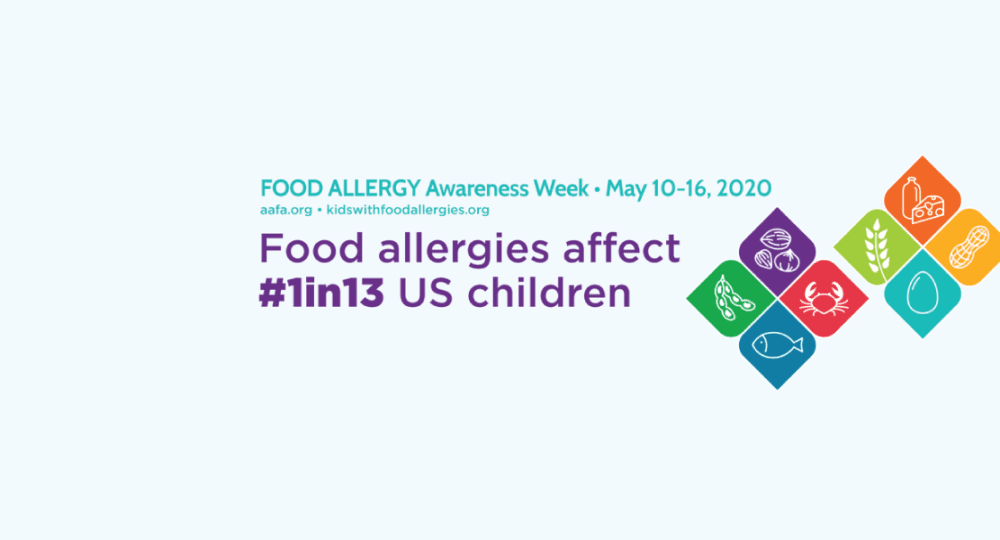According to The Asthma and Allergy Foundation of America, approximately 32 million people in the United States have food allergies, and 5.6 million of those affected are children. Allergies are most common in young children. Children with food allergies are also 2-4 times more likely to have asthma or another allergic disease.
Eight foods cause 90% of food allergy reactions:
- Milk
- Egg
- Peanut
- Tree nut (e.g. almond, walnut, cashew, pecan, pistachio)
- Wheat
- Soy
- Fish
- Shellfish (e.g. crab, shrimp, scallop, clam)
It is estimated that 80% to 90% of egg, milk, wheat, and soy allergies are outgrown by the age of 5. Unfortunately, allergies to peanut, tree nut, fish, and shellfish are much more likely to be lifelong.
A food allergy occurs when the body’s immune system mistakes a certain food as harmful and mounts a response. Even trace amounts of an allergen can trigger an allergic reaction in some individuals. Symptoms may begin to occur within minutes to up to 2 hours after exposure to an allergen. A reaction can be mild to severe, and when it is life-threatening, it’s called anaphylaxis.
Signs and symptoms of anaphylaxis can include:
- Skin rashes with itching and hives
- Swelling of the lips, tongue or throat
- Shortness of breath, trouble breathing, wheezing
- Dizziness and/or fainting
- Stomach pain, vomiting, diarrhea
- Anxiety, panic, sense of doom
Anaphylaxis can lead to airway constriction, severely low blood pressure, shock, and even death. The sooner anaphylaxis is treated, the less severe it is likely to become. The first-line treatment for anaphylaxis is epinephrine, so those with food allergies should always have epinephrine auto-injectors (epi-pens) on hand. Each year in the US, it is estimated that severe reactions to food cause around 30,000 emergency room visits, 2,000 hospitalizations, and 150 deaths.
When a person is experiencing symptoms of anaphylaxis the following steps should be taken:
- Give epinephrine!
- Eliminate all risks of additional allergen exposure
- Call 911 or seek medical attention immediately
- Have the person lay down with his or her legs raised to help restore blood flow to vital organs
- Repeat epinephrine every 5-10 minutes if symptoms continue or get worse
- Secondary medications such as an antihistamine or asthma inhaler may also be given (but never in place of epinephrine)
Currently, there is no cure for food allergies, and avoiding the allergen is the most important way to prevent a reaction. Research into food allergies and potential treatment is on-going. Some treatments currently being studied include:
- Anti-IgE therapy- Taking a medication that interferes with the body’s ability to use IgE (an antibody produced by the immune system in response to an allergen). A new experimental drug, Omalizumab, was released in August 2019.
- Food, oral, sublingual, and epicutaneous immunotherapy – Small doses of the food allergen are swallowed, placed under the tongue, or worn on the skin as a patch. The dose of allergy-provoking food is gradually increased.
- Baked milk and egg therapy- Consumption of food that includes baked milk or egg as a gradual introduction to the allergen.
- Early exposure – exposure to peanut protein before 12 months of age may drastically reduce the chances of high-risk children developing a peanut allergy.
More information and resources about food allergies, as well as the content discussed in this article, can be found at:
https://www.foodallergyawareness.org
https://www.kidswithfoodallergies.org





